CURTAIN
Page One
Page One
Photographs
© Brian Rose
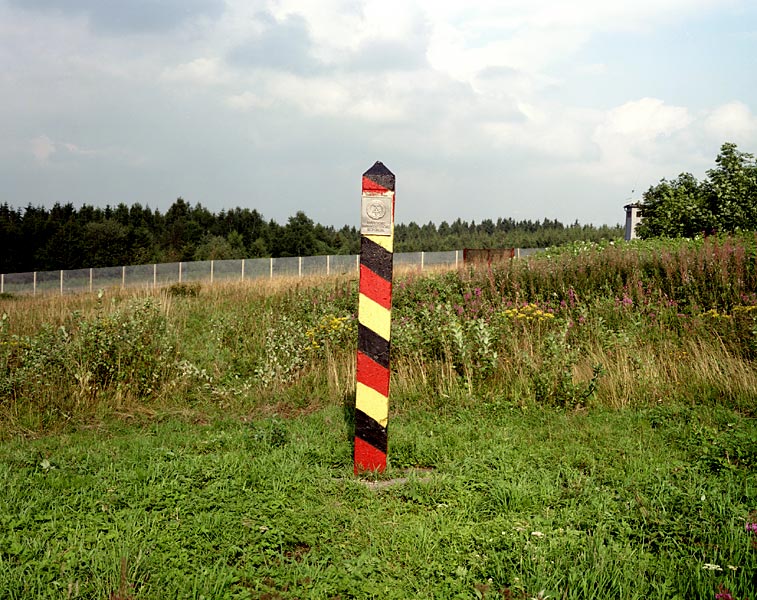 |
|
East/West German Border, 1985 |
| It could have started with my boyhood admiration of John F. Kennedy who went to Berlin after The Wall went up. "Ich bin ein Berliner." Or, a copy of National Geographic magazine, with pictures of the divided city that I saved for years. Or much later, the films of Wim Wenders. Particularly, Kings of the Road (Im Lauf der Zeit), in which two disaffected men travel along the East/West border. "The Yanks have colonized our subconscious," one of them says in the film. Whatever it was, I wanted to move beyond New York City as my primary subject, and do something that dealt with the larger issues of the day. After a number of months of research, I flew to Germany, rented a car, and began the project. |
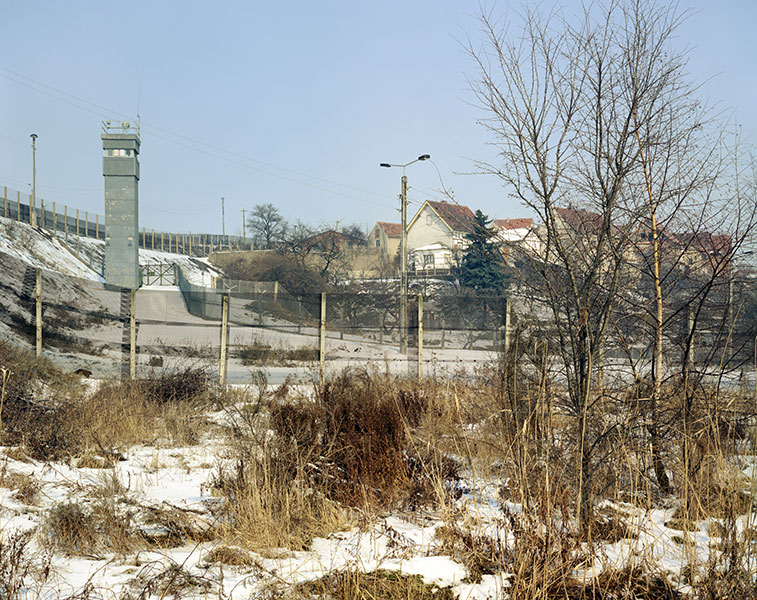 |
|
Dankmarshausen, East/West German border, 1987 |
| Along most of the border one sees double fences made of steel mesh with sharp edges. But next to cities and built-up areas the fences give way to the same concrete wall that is used in Berlin, presumably to provide more security. The fence creates an odd optical effect--head on, one can see through it relatively easily, but to the side, it appears nearly opaque. The fences and walls are always set back from the actual borderline, which is marked by posts and signs. Sometimes the border is most obviously demarcated by the fact that the grass is mowed on one side, but not on the other. |
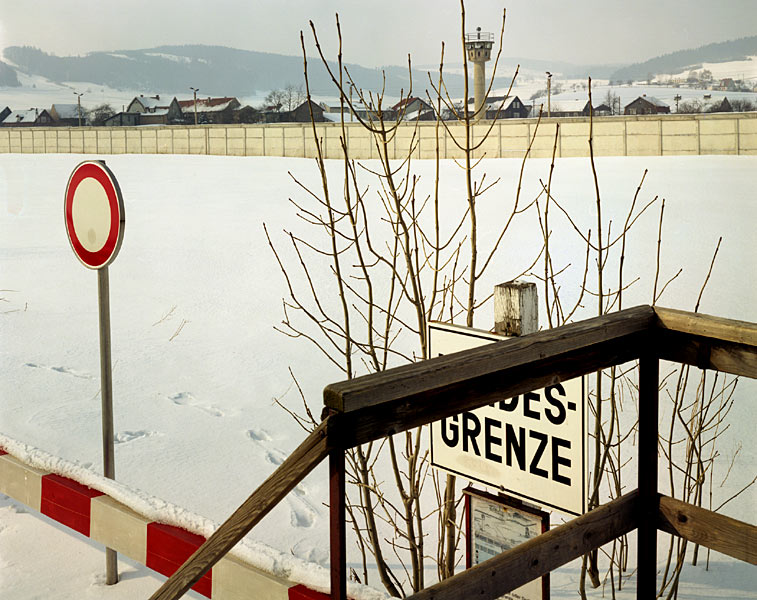 |
|
Heinersdorf, East/West German Border, 1987 |
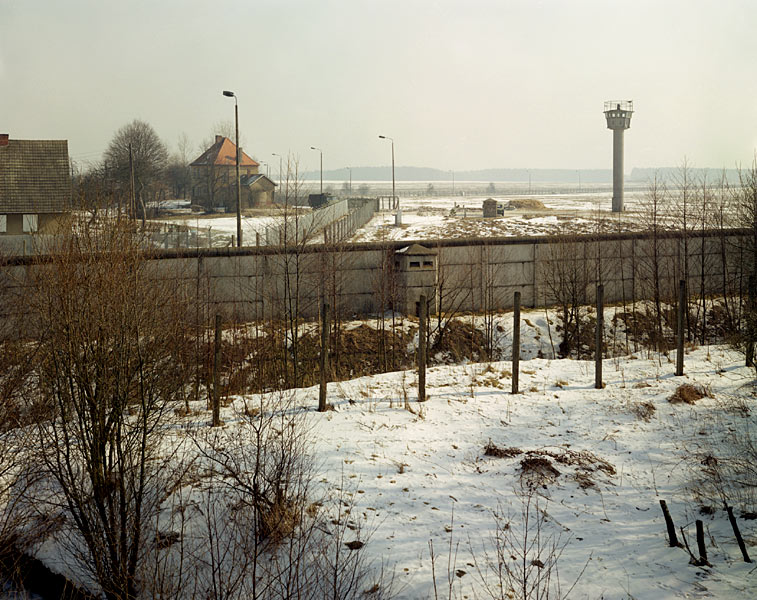 |
|
East/West German Border. 1987 |
| There are three kinds of guard towers. One is pod-like with its head sitting on a cylindrical base. This design keeps reminding me of a very sinister E.T. The other towers are rectangular; the larger of the two serve as command posts. When I am around with my camera, binoculars are almost always sticking out the windows in my direction. |
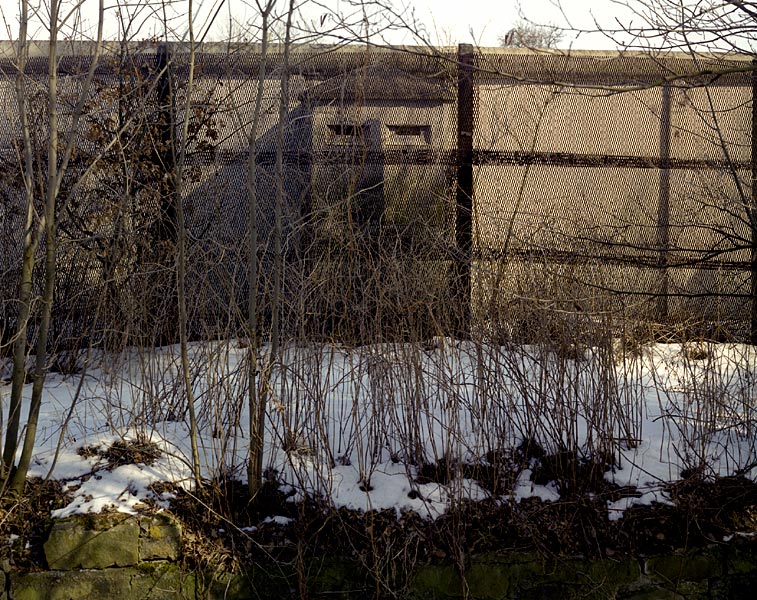 |
|
East/West German Border, 1987 |
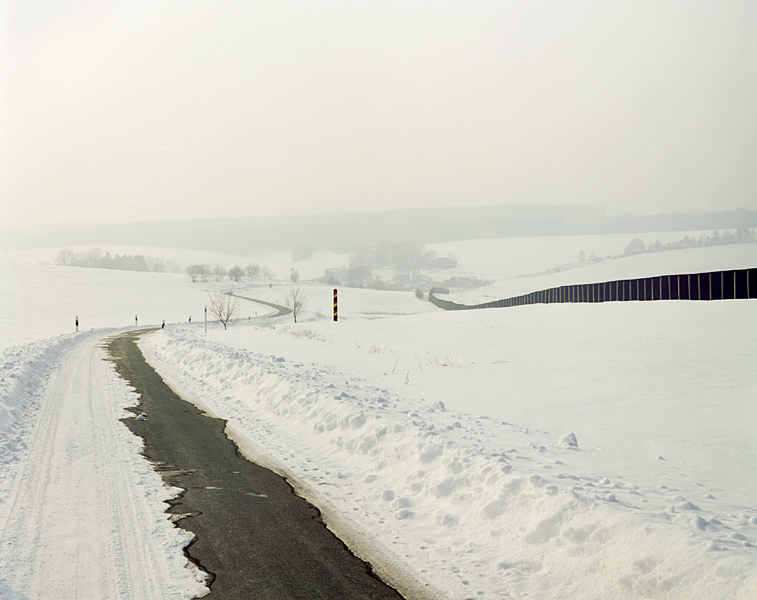 |
|
Mödlareuth, East/West German Border, 1987 |
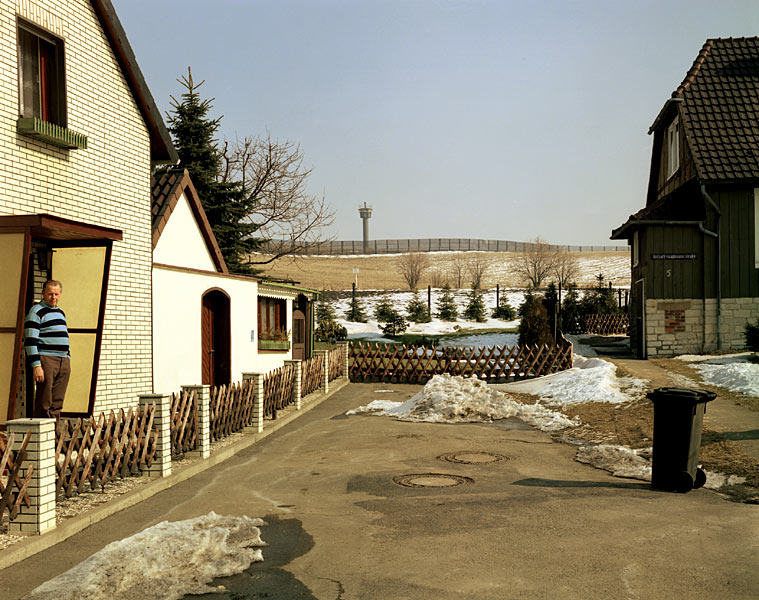 |
|
Offleben, East/West German Border, 1987 |
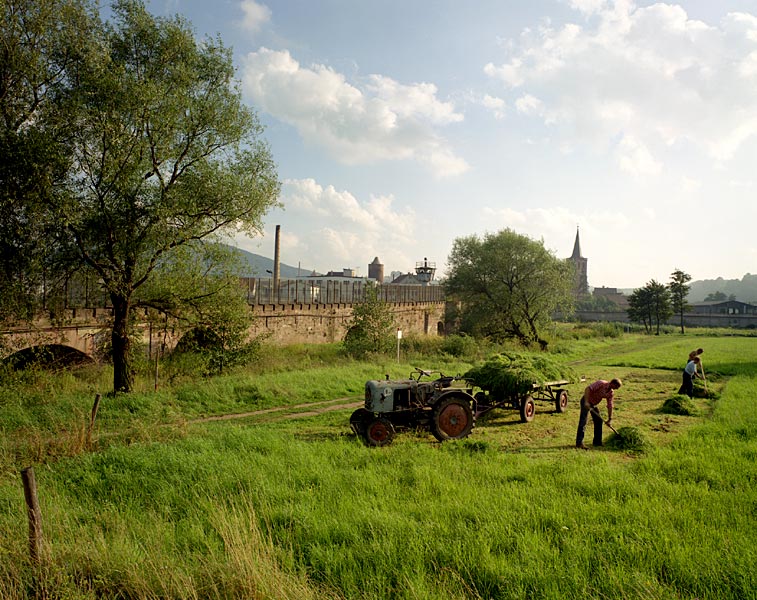 |
|
Vacha, East/West German Border, 1985 |
| The border follows the Werra River and then crosses it by way of a centuries old stone bridge. The border then continues on the other side of the river. The bridge once linked Philippsthal to Vacha, the latter now in the GDR. The field next the bridge on the western side was being mowed—kids played in the street nearby—some tourist walked about. I took my pictures and the guards watched from their towers. |
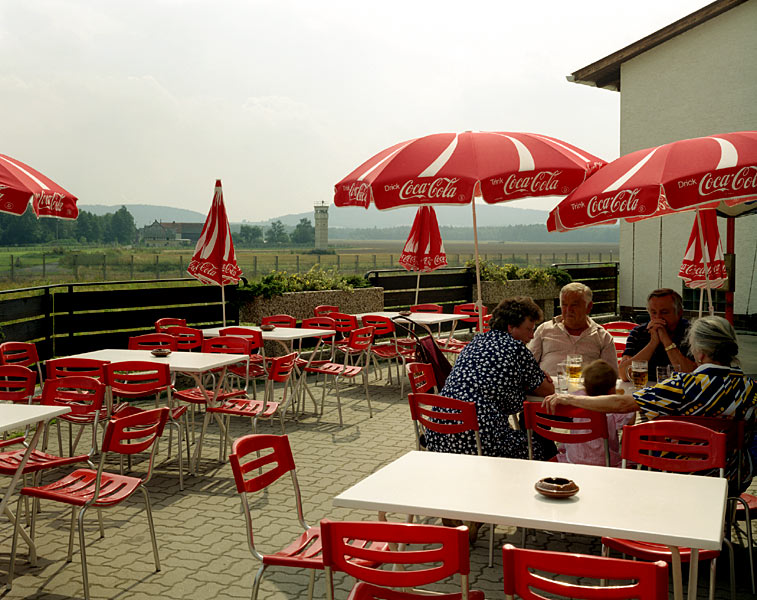 |
|
Neustadt, East/West German Border, 1985 |
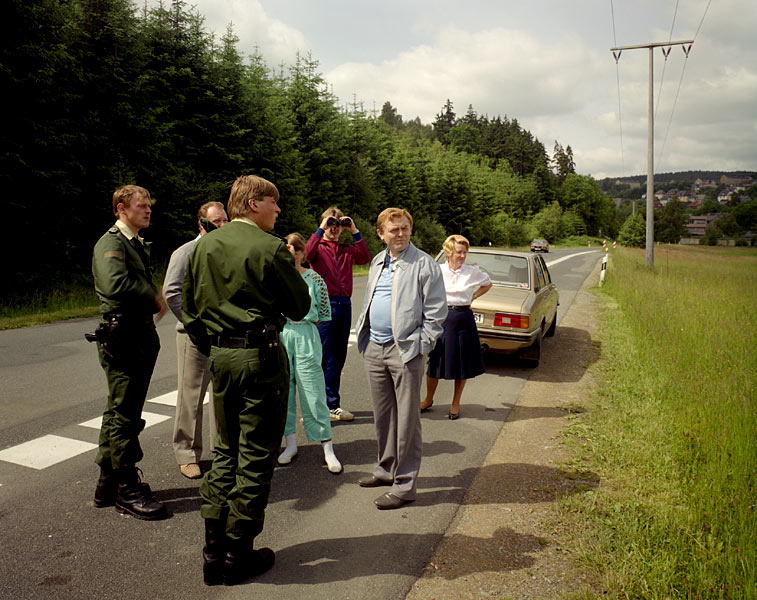 |
|
Blankenstein, East/West German Border, 1985 |
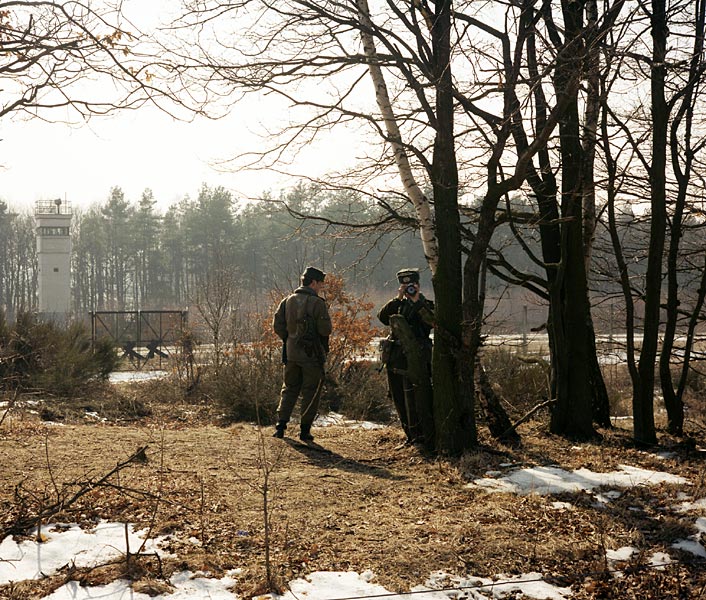 |
|
Winnigstedt, East/West German Border, 1987 |
| I continue to encounter various western military patrols--the British in the north and Americans in the south--but most often I see the Bundesgrenzschutz, the West German border guards. They appear primarily involved in a watching game with their counterparts across the border. At one border overlook I watched a couple of East German guards busying themselves at the base of a watchtower. Suddenly, they made a beeline for a gate in the fence, entered the no man's land and stood just a few feet across the border from me. One of them began taking pictures, the other turned his back as I set up my camera and photographed them. |
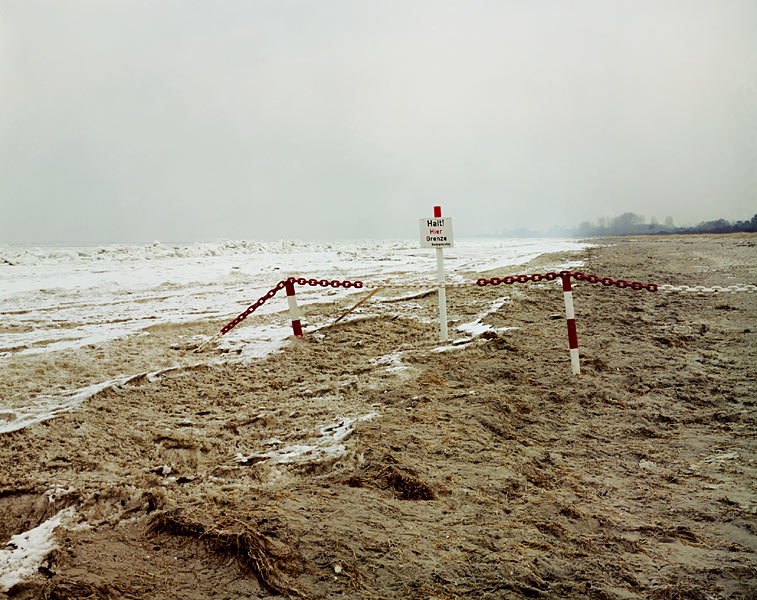 |
Travemünde, East West German Border, 1987 |
| In Priwall, the northernmost point of the border, the fences meet the Baltic Sea. The usual red and white markers, placed by the West German border police, are supplemented here by barriers and chains that descend right across the beach into the surf--presumably to discourage wayward beachcombers and swimmers. In the distance Icould see the GDR fence turn the corner and follow the beach for an indeterminate distance. Though the morning had started sunny, clouds had now moved in with patches of weak sunshine breaking through. The Baltic surf had frozen into a six foot high ridge of impacted ice chunks. |
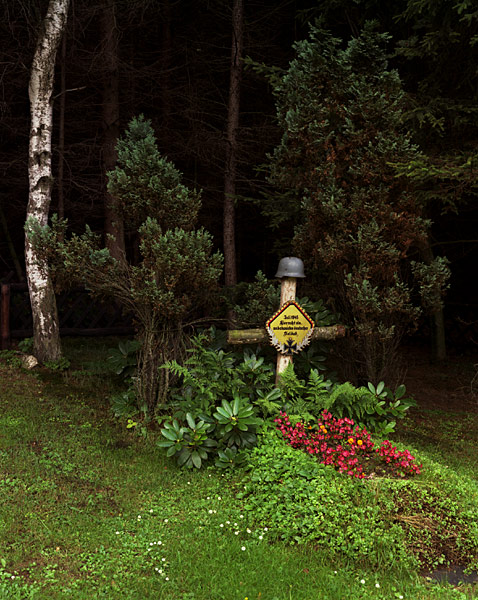
|
Dreiländereck, East/West German Border, 1985 |